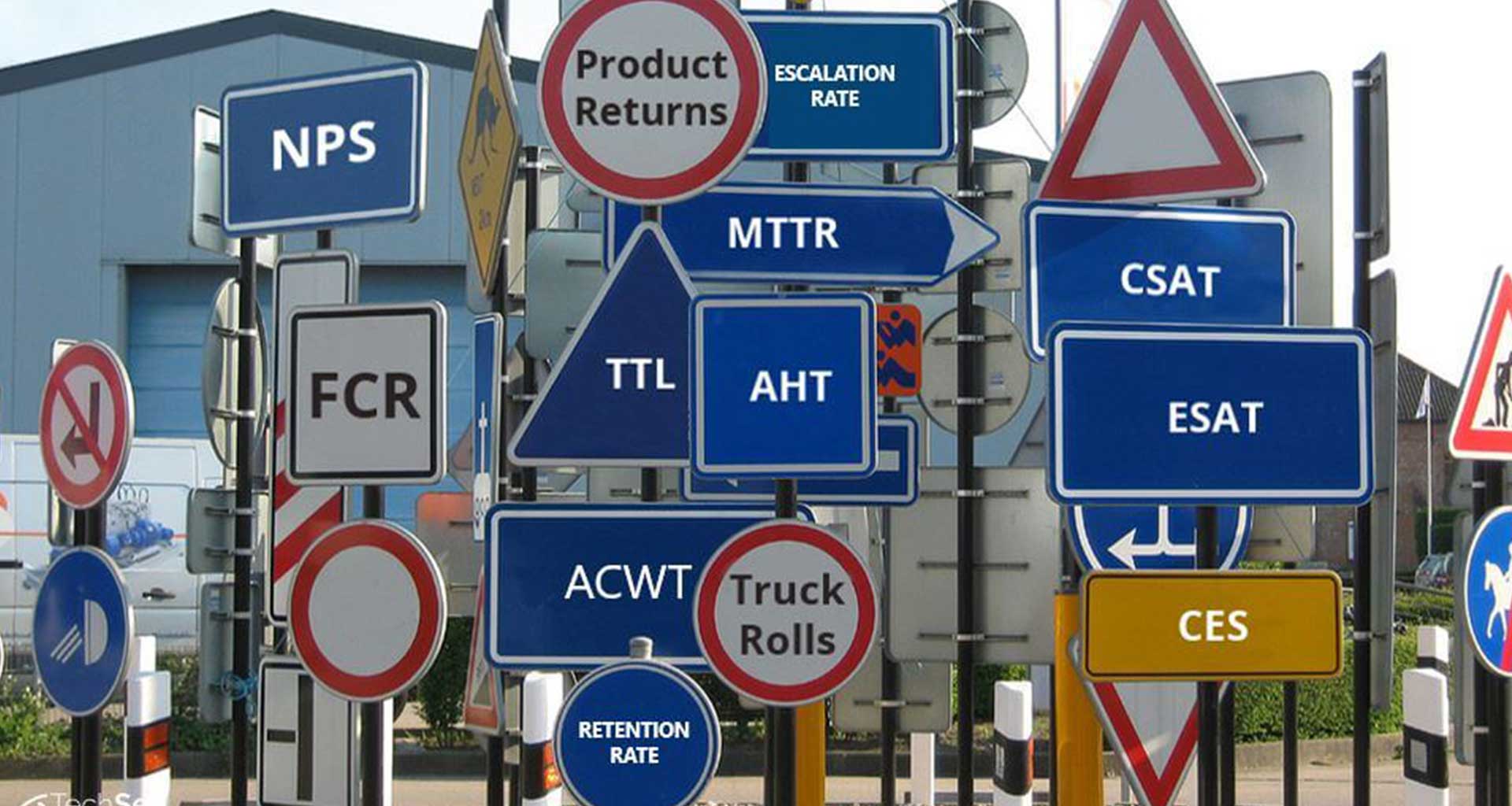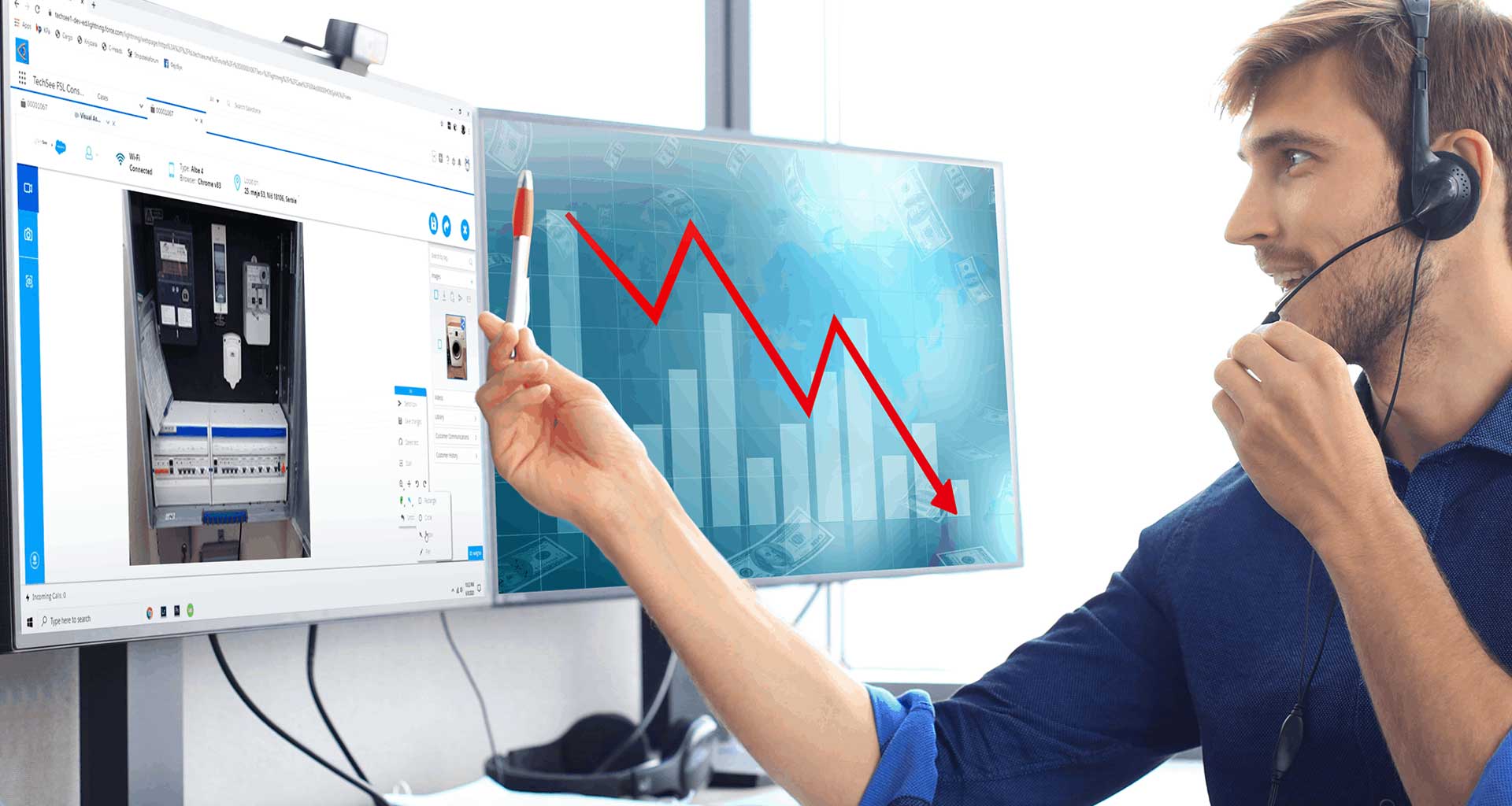Contents
For years, companies have battled to strike the right balance between customer service KPIs. Focusing on one metric would often harm others. For example, heavy emphasis on low AHT would often negatively impact customer satisfaction. Conversely, when trying to improve NPS, agents would often spend additional time building relationships with their customers, driving up call durations.
Recently, an innovative technology has emerged, transforming contact center operations and customer experience across a wide range of industries: Visual Assistance. It enhances all customer service KPIs, including those measuring contact center productivity and CX quality. The technology is unique because it delivers KPI improvements without cannibalizing others. All metrics progress simultaneously, reinventing contact center culture and improving the bottom line, thanks to significant cost savings and higher customer retention.
Download this eBook to discover our KPI data findings from Techsee’s client network
TechSee has analyzed data from our clients, comparing it with data collected from control groups. The results provide eye-opening insights into how Visual Assistance enhances customer service KPIs across numerous industries.
Covering 70 clients, 220 contact centers and help desks and 30,000 agents, the report highlights the impact of Visual Assistance on customer service KPIs over time. Complete confidentiality has been maintained with regard to sensitive or customer-specific data.
Data was collated from clients in sectors including telecom, consumer electronics, utilities, insurance, and medical technology. The results focus on five core KPIs: truck rolls, FCR, NPS, AHT and product returns.
Customer Service KPIs – The Results
| Customer Service KPI | Improvement |
|---|---|
| Truck rolls | 19% |
| FCR | 22% |
| NPS | 45% |
| AHT | 12% |
| Product returns | 17% |
KPI #1: Reduce Truck Rolls/Tech Dispatch
Truck rolls – or the need to dispatch a technician to a customer’s location – represent one of the largest costs in customer service operations, across numerous industries.
Better remote resolution: a more efficient customer support process eliminates 90% of NFF dispatches.
Due diligence prior to dispatch: agents can determine the exact nature of the issue and dispatch the right technician with the correct information and parts.
Remote consultation: technicians requiring further support in the field can consult with a remotely located expert.
Visual Assistance decreases tech dispatch rates across industries by 19% after just eighteen months. Click here for the full report.
KPI #2: First Contact Resolution (FCR)
FCR is the customer service KPI used to gauge a contact center’s ability to resolve the issue the first time the customer reaches out to the company, eliminating the need for them to follow up with a second contact to seek resolution.
Faster issue identification: agents can see the problem with their own eyes, eliminating the need for them to rely on the customer’s description of the issue.
Elimination of confusion: customers receive precise Augmented Reality guidance on their screen, so the point of reference and required course of action are crystal-clear.
Easier data verification: when visual proof is required, such as for billing disputes, promotional eligibility or warranty authentication, customers can simply show the agent their documents via their smartphone.
Verification of resolution: visually confirming that the issue is indeed resolved goes a long way toward avoiding repeat calls about the same issue.
Visual Assistance increases FCR across industries by 22% after eighteen months.
KPI #3: Net Promoter Score (NPS)
NPS is the customer service KPI that measures customers’ overall perception of a brand and the likelihood of them recommending the product or service to a friend.
Faster service: customers appreciate resolving their issue as quickly as possible, at the first time of asking.
Reduced escalations: frontline agents become multiskilled product experts, capable of resolving all but the most complex cases.
Elimination of unnecessary tech dispatches: by empowering customers to self-resolve issues, the frustration of waiting for a technician visit is often avoided.
Increased call deflection to self-service: self-service options reduce waiting, saving valuable time for customers.
Greater personalization: providing support via the customer’s preferred communication channels has been proven to drive brand loyalty.
Visual Assistance boosts NPS across industries by 45% after eighteen months.
KPI #4: Average Handling Time (AHT)
AHT measures the duration of each customer episode with the goal of ensuring contact center efficiency, planning headcount and reducing operational costs.
Quick grasp of the issue: agents instantly see the nature of the problem, enabling them to understand and resolve it faster.
Clear visual guidance: using Augmented Reality, the customer is shown precisely what actions are required, allowing them to complete the process in a fraction of the time.
Verification of resolution: agent can visually confirm resolution much more quickly than by asking the customer for verbal verification.
Elimination of irrelevant cases: rapid identification of issues that are outside of scope, for example by seeing that a customer’s warranty has expired.
Reduction of post-call work: capturing images of defective devices is much faster than writing a lengthy report.
Visual Assistance shortens AHT across industries by 12% after eighteen months.
KPI #5: Product Returns / Hardware Replacements / Pickups
The prevalence of consumer returns of non-defective electronic devices represents a massive pain point for electronic brands and retailers as this 2019 TechSee survey reveals.
Prevention of returns: a more engaging and interactive experience – during initial setup, configuration, troubleshooting or for regular maintenance – reduces the likelihood of returns.
Virtual “try before they buy”: when interacting with a product live is not possible or convenient, interactive video has emerged as an effective alternative.
Promotion of self-service: more personalized and effective than product videos, Visual Assistance with Augmented Reality capabilities incorporates interactive feedback and the ability to correct the customer when needed.
Visual Assistance reduces product returns across industries by 17% after eighteen months.






